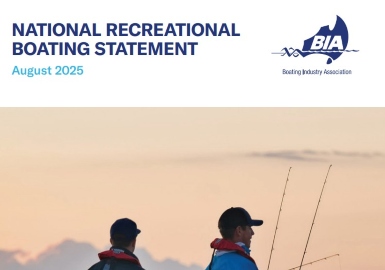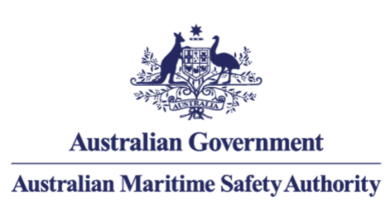
The Australian Maritime Safety Authority (AMSA) has released guidance on how to use an exhaust gas cleaning system (EGCS) to meet the fuel sulphur limit of 0.50% m/m, as required under MARPOL Annex VI and Australian law. This what AMSA has to say on exhaust gas cleaning systems.
Marine notice 2025/04 provides guidance on using an exhaust gas cleaning system (EGCS) to support compliance with the sulphur limit of 0.50 mass per cent concentration (m/m) in fuel oil.
The sulphur limit is required by the International Convention for the Prevention of Pollution from Ships (MARPOL) Annex VI and Australia’s domestic law.
Use and operational standards
You may use an EGCS as an alternative way to comply with the low sulphur fuel requirements under MARPOL Annex VI.
In Australia, this is allowed under section 26FEGA of the Protection of the Sea (Prevention of Pollution from Ships) Act 1983.
To comply, your EGCS must currently be:
• approved by the vessel’s flag State Administration, or a Recognised Organisation appointed by the flag State
• operated in accordance with International Maritime Organization (IMO) requirements, including the 2021 Guidelines for Exhaust Gas Cleaning Systems (resolution MEPC.340(77)). (IMO Guidelines).
Discharge water standards
All EGCS types (open-loop, closed-loop, hybrid) operated in Australian waters are subject to the same discharge water standards.
You may release discharge water from EGCS in Australian waters. All discharges must meet the discharge water quality criteria in the IMO Guidelines, and as amended from time to time.
This includes discharges in waters within:
Australia’s Particularly Sensitive Sea Area (PSSA) areas within the MARPOL ‘nearest land’ boundary, including the Great Barrier Reef Marine Park.
Some port authorities may encourage vessels not to release discharge water within port limits. You should contact the specific port Authority prior to discharge.
Sludge ad residue disposal
- EGCS sludge and residues must be disposed of at port reception facilities.
- They must not be discharged at sea
- must not be incinerated onboard.
Operational requirements
- When operating an EGCS, you must ensure:
- crew members are familiar with correct operation of EGCS
- the system is kept in good working order and maintenance is up to date
- monitoring devices are fully functional
- records are available for inspection, including:
- EGCS approval documents
- operational and maintenance records for the EGCS.
- Records must be kept onboard the vessel and provided on request of a Port State Control Officer (PSCO).
EGCS malfunctions
If your EGCS malfunctions, you must take immediate action and may need to report it.
The notice provides step-by-step guidance on dealing with an EGCS malfunction including: trying to fix the malfunction, switching to compliant fuel oil and reporting and reporting the malfunction, and what to do if you don’t have enough compliant fuel oil.
Any EGCS that does not comply with IMO Guidelines in any respect (including but not limited to the discharge water quality criteria) may be prohibited from use in Australian waters.
The notice is aimed at vessel owners and operators, and it should be read in conjunction with MARPOL Annex VI and associated guidelines, relevant Acts, and Marine Orders. It does not constitute legal advice and is not a substitute for independent professional advice.
Read the guidance: AMSA Marine Notice 2025-04

